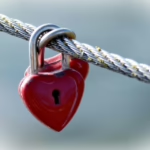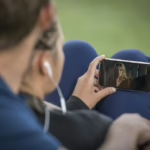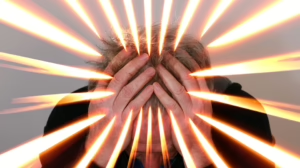From Bystanders to Heroes: Exploring the Bystander Effect
Introduction
In situations of crisis, the presence of bystanders can often affect the outcome of an event dramatically. The phenomenon known as the bystander effect suggests that the presence of others can inhibit individuals from intervening in emergencies. Rooted in psychology and social behavior, this effect has profound implications not just for individuals but for society as a whole. This article delves into the bystander effect, exploring its origins, impact, and the potential for transformation from bystanders into active heroes.
The Bystander Effect: An Overview
The bystander effect is a social psychological theory that illustrates how individuals are less likely to offer help in an emergency when other people are present. This concept emerged in the wake of the tragic murder of Kitty Genovese in 1964, where it was reported that numerous witnesses failed to intervene or call the police as she was attacked. This shocking case sparked a wave of psychological research and inquiry into social responsibility, leading to the identification of key factors that contribute to the bystander effect.
Key Components of the Bystander Effect
-
Diffusion of Responsibility: When multiple individuals witness an emergency, the perceived responsibility to act is diminished. Each bystander may assume someone else will intervene, resulting in inaction.
-
Pluralistic Ignorance: In ambiguous situations, individuals often look to others for cues on how to behave. If no one else is acting, they may interpret the situation as non-threatening or trivial.
-
Evaluation Apprehension: Bystanders may fear being judged for their actions—or lack thereof. This fear can paralyze decision-making, leading individuals to refrain from intervening to avoid public scrutiny or embarrassment.
- Social Influence: Individuals might adjust their response based on the behavior of others. If a group does not react, individual members might assume that intervention is unnecessary.
Research Insights
Various studies have illuminated the bystander effect. One notable experiment by researchers Bibb Latané and John Darley highlighted the impact of group presence on helping behavior. Participants in one scenario, where they believed they were witnessing a seizure during a discussion, were significantly less likely to help when they thought more people were present. When alone, individuals were more likely to offer assistance, showcasing the profound influence of audience behavior on personal action.
Real-World Implications
The bystander effect is not limited to academic environments; it extends to a variety of real-life scenarios. From urban environments to online interactions, the implications range widely.
Emergency Situations
In emergencies, the bystander effect can result in catastrophic outcomes. For example, during accidents or violent acts, numerous bystanders may witness the events but fail to intervene. The implication is that such inaction can exacerbate an already critical situation.
Bullying and Harassment
In school environments or workplaces, bullying can go unchecked when bystanders remain silent. The fear of repercussion or social isolation can prevent witnesses from speaking up, allowing harmful behaviors to persist. This not only affects the victim but reinforces a culture of silence and complicity.
Online Interactions
In the digital age, the bystander effect has translated into online behavior. Cyberbullying presents a faceless realm where individuals may witness harassment yet choose to ignore it. The anonymity afforded by the internet can dampen the sense of responsibility individuals feel to act.
The Role of Media
Media portrayal can significantly influence the bystander effect. Coverage often highlights individual cases of heroism or, conversely, collective inaction. This framing can shape public perception and influence future behavior in similar situations.
Moving from Bystanders to Heroes
Despite the overwhelming evidence supporting the bystander effect, it is crucial to acknowledge the potential for transformation. Individuals can become heroes by breaking through the barriers of inaction.
Cultivating Empathy
Empathy is a powerful antidote to the bystander effect. Fostering a deeper emotional connection to others can inspire action. Programs designed to cultivate social and emotional skills, particularly in youth, can empower individuals to understand the impact of their actions on others. Encouraging people to imagine themselves in the victim’s position can evoke a sense of responsibility to act.
Public Awareness Campaigns
Educating the public about the bystander effect is essential. Awareness campaigns can target communities, workplaces, and schools, promoting the message that "your action matters." By illustrating case studies of heroic intervention alongside the bystander effect, individuals may feel more motivated to take action in times of crisis.
Empowering Bystanders
Training programs can be developed to equip individuals with the skills necessary to intervene effectively. Learning how to assess a situation, recognize when intervention is needed, and act safely can dispel fear and hesitation. Programs like QPR (Question, Persuade, Refer) in suicide prevention, teach bystanders how to intervene in mental health crises effectively.
Engaging Communities
Communities can play a crucial role in transforming bystanders into heroes. Establishing neighborhood watches or organized community groups that promote collective action can create a support network for individuals in distress. This sense of association can encourage intervention and foster stronger communal ties.
Leveraging Technology
In an age where technology permeates our lives, it can also be harnessed to combat the bystander effect. Mobile apps designed for quick reporting or providing resources for crisis intervention can empower individuals to act—even if only indirectly. Instant communication can facilitate timely responses to emergencies that might otherwise go unreported.
Conclusion
The journey from bystanders to heroes is complex but achievable. Understanding the bystander effect is the first step in recognizing the barriers that keep individuals from intervening. By cultivating empathy, raising awareness, providing training, engaging communities, and leveraging technology, we can create a society that values action over apathy.
Heroism often lies not in grand gestures, but in the willingness to step forward when it matters most. By transforming the narrative surrounding the bystander effect, we have the opportunity to redefine societal norms around intervention and responsibility, creating a culture where people actively support one another in times of need.
References
-
Latané, B., & Darley, J. M. (1970). The Unresponsive Bystander: Why Doesn’t He Help? New York: Appleton-Century-Crofts.
-
Genovese, K. (1964). The Kitty Genovese Case: A Study in Bystander Intervention. The New Yorker, 40(1), 31-39.
-
Fischer, P., Greitemeyer, T., Pollo, T., & Frey, D. (2006). The Bystander Effect: A Meta-Analytic Review. Psychological Bulletin, 132(4), 551-579.
-
Plötner, M., & Eimer, M. (2016). Differentiating Between the Bystander Effect and the Bystander Intervention Effect: Demarcation via Cognitive Processing. Journal of Social Psychology, 156(2), 148-160.
-
Tice, D. M., & Baumeister, R. F. (1985). Self-Presentation and Self-Esteem: The Role of Self-Regulation. Journal of Personality and Social Psychology, 55(5), 356-369.
- van Gelder, J.-L., & Borkenau, P. (2021). The Protective Role of Communication in the Bystander Effect: Evidence from Two Replications of Collaborative Tasks. Social Influence, 16(1), 48-58.
Overall, transforming the bystander effect requires collective effort and societal commitment, but it can result in significant changes in how we respond to crises, fostering a culture of proactive support and heroism.


























Add Comment